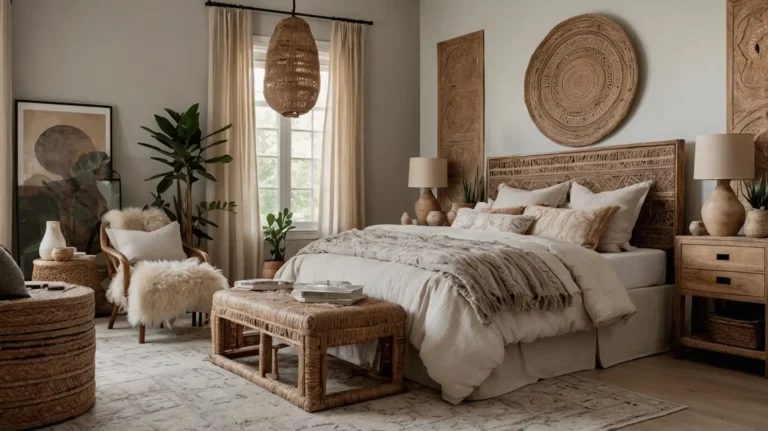27 Stunning Midcentury Modern Living Room Ideas to Transform Your Space
Midcentury modern design continues to captivate with its clean lines, organic curves, and timeless appeal.
This beloved style from the 1940s through the 1960s blends function with form in a way that feels both nostalgic and remarkably current.
Creating a midcentury modern living room doesn’t require a complete overhaul of your space.
With strategic furniture choices, thoughtful color palettes, and carefully selected accessories, you can channel this iconic aesthetic in your own home.
Whether you’re looking to fully commit to the midcentury look or simply incorporate elements into your existing decor, these ideas will help you capture the essence of this enduring design movement.
Let’s explore ways to bring this sophisticated yet approachable style into your living space!
1: Statement Seating With Organic Forms
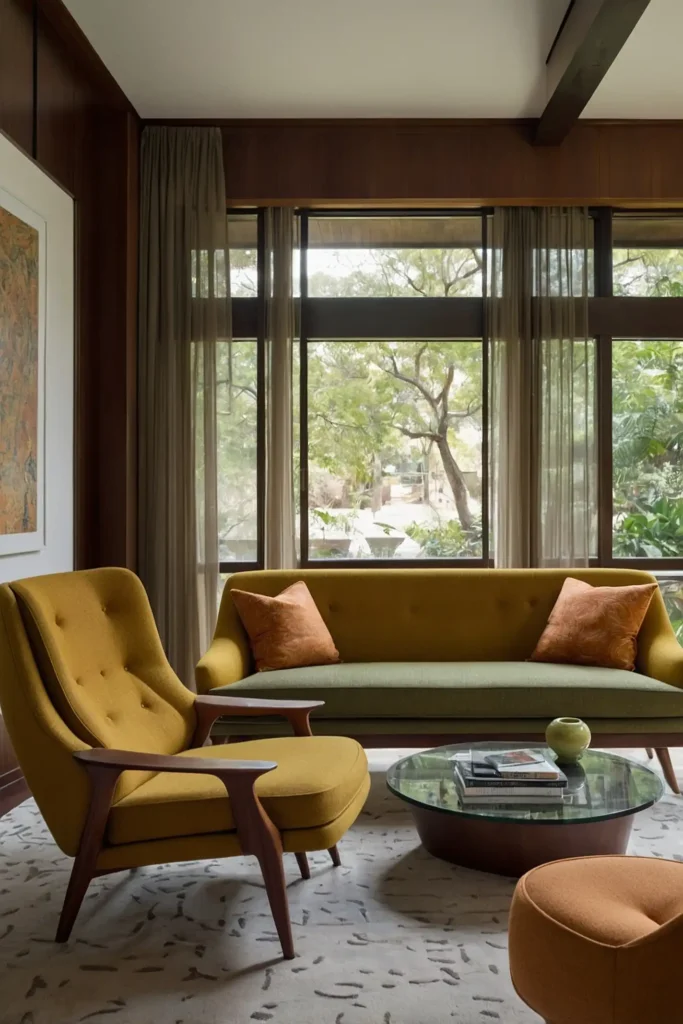
Invest in a sofa or lounge chair with the iconic organic curves and tapered legs characteristic of midcentury design.
Look for pieces with clean lines and minimal ornamentation.
Consider materials authentic to the era like teak or walnut frames paired with wool upholstery.
Colors like mustard yellow, olive green, or burnt orange capture the period perfectly.
Position your statement piece to serve as the focal point of your room.
This instantly establishes midcentury credibility while providing a foundation for the rest of your design.
2: Walnut Wood Accents
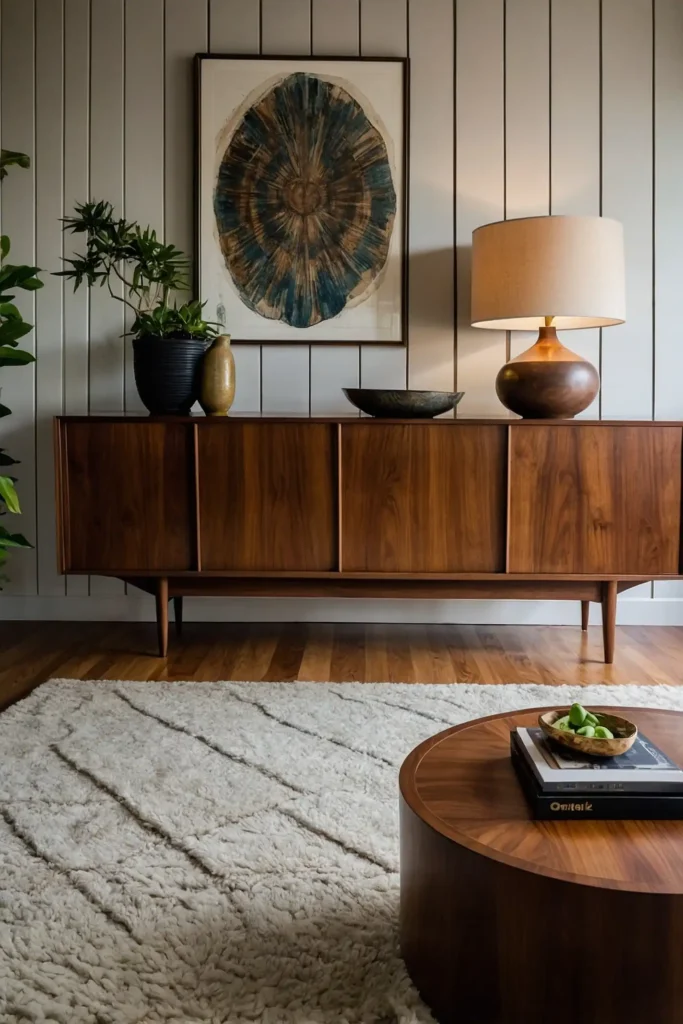
Incorporate the rich, warm tones of walnut throughout your living space.
This quintessential midcentury wood adds authentic character to any room.
Look for coffee tables, side tables, or credenzas with tapered legs and minimalist hardware.
The natural grain and deep color create visual interest without overwhelming the space.
Balance wooden elements with softer textures to prevent the room from feeling too heavy. This creates the harmonious blend of materials that defines midcentury design.
3: Starburst Clocks And Mirrors
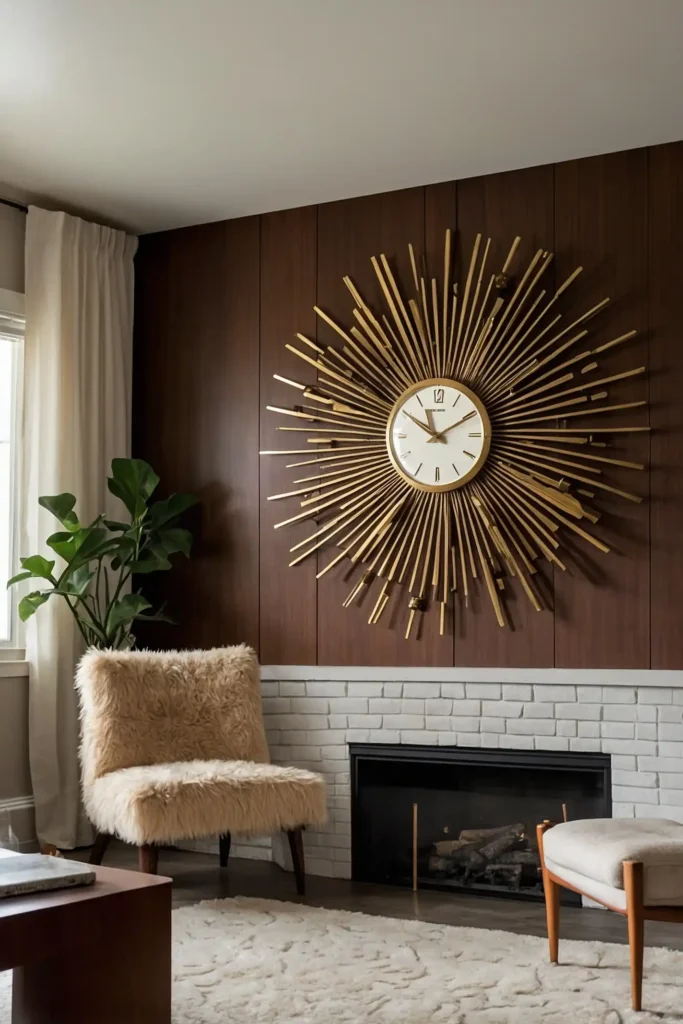
Hang a starburst clock or mirror to instantly capture the atomic age aesthetic central to midcentury design.
These iconic pieces serve as both functional items and statement art.
Position them above a fireplace or sofa to create a natural focal point. Choose metal finishes in brass or copper for authentic period charm.
The radiating spokes add visual dynamism to your walls while reinforcing the space-age influence on midcentury modern design.
This simple addition packs major style impact.
4: Low-Profile Furniture Arrangements
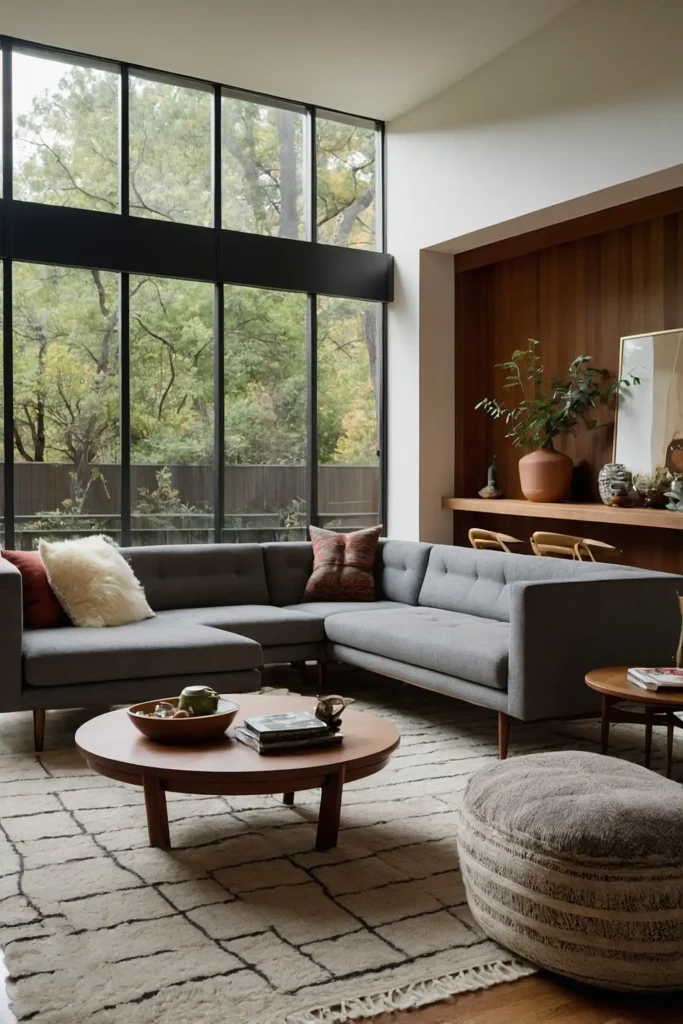
Create an open, airy feeling with low-slung furniture that hugs the floor.
This quintessential midcentury approach visually expands your space while creating a relaxed atmosphere.
Arrange seating to encourage conversation rather than focusing on a television.
Include a low coffee table that’s easily accessible from all seating positions.
This horizontal emphasis reflects the period’s architectural preferences and creates a distinctly midcentury silhouette throughout your living area.
The result feels both casual and sophisticated.
5: Geometric Area Rugs
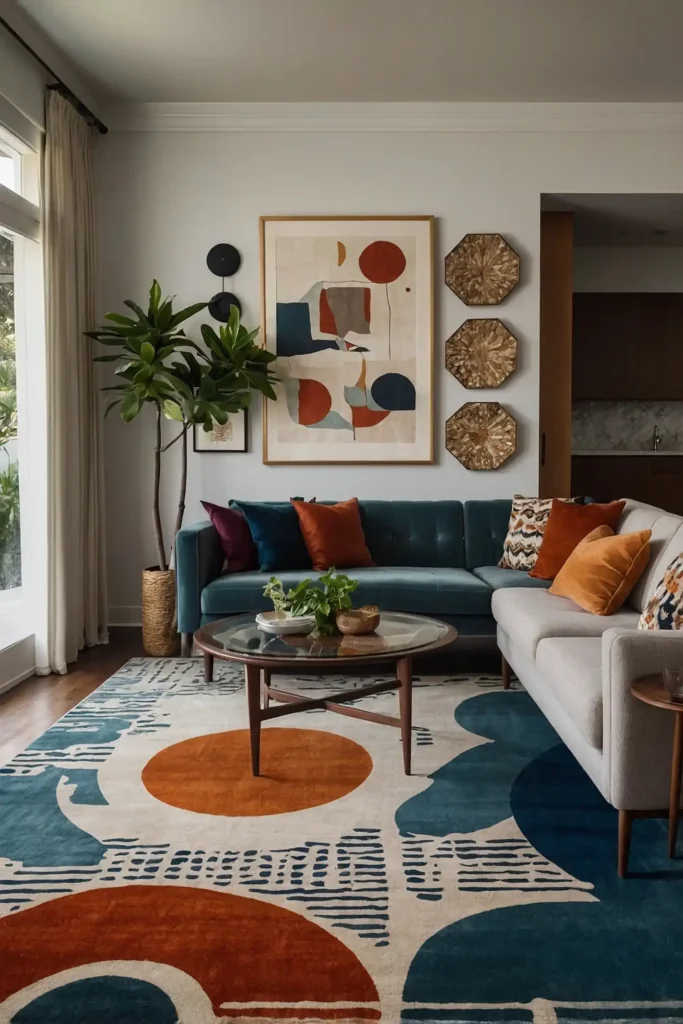
Ground your space with a geometric area rug featuring abstract patterns or simple shapes.
Midcentury rugs often showcase asymmetrical designs in bold or contrasting colors.
Look for angular patterns, boomerang shapes, or atomic-inspired motifs to reinforce the era’s aesthetic.
Choose a size that allows all furniture legs to rest on the rug.
This graphic foundation adds visual interest to your floor while tying together your color scheme. It’s an effective way to introduce pattern without overwhelming your space.
6: Sputnik Chandeliers
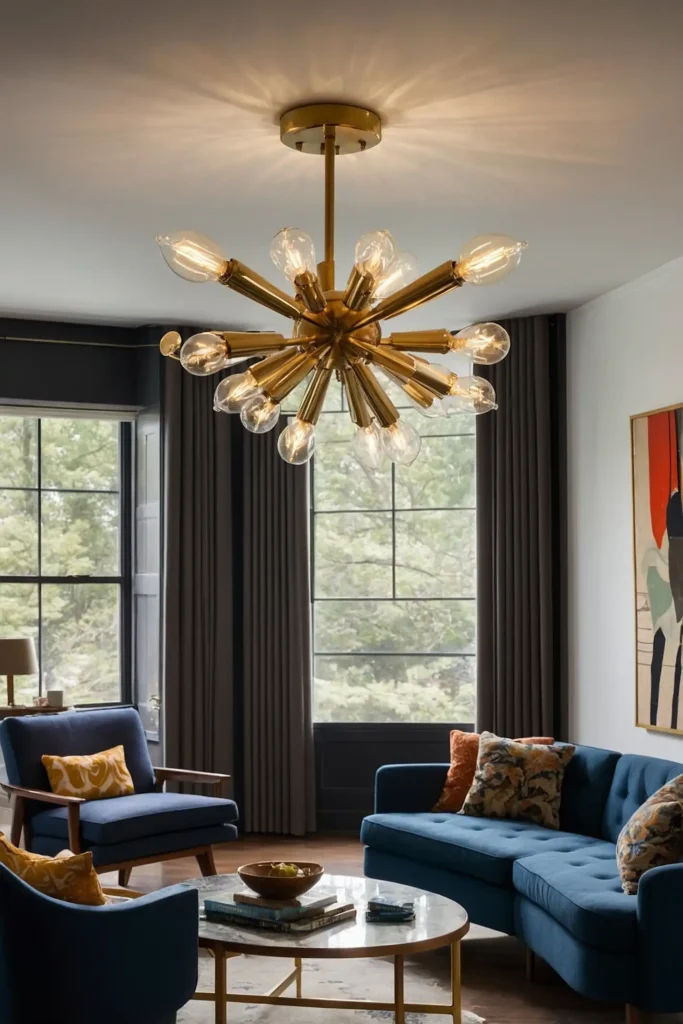
Install a Sputnik chandelier as a striking ceiling feature that captures the space-age obsession of the midcentury era.
These starburst-shaped fixtures cast interesting shadows while providing ambient lighting.
Choose brass or chrome finishes for authentic appeal. Position the fixture centered in the room or over a key furniture grouping to maximize impact.
The distinctive silhouette creates an immediate connection to midcentury design history.
This lighting choice serves as functional sculpture that anchors your living room from above.
7: Built-In Shelving With Display Spaces
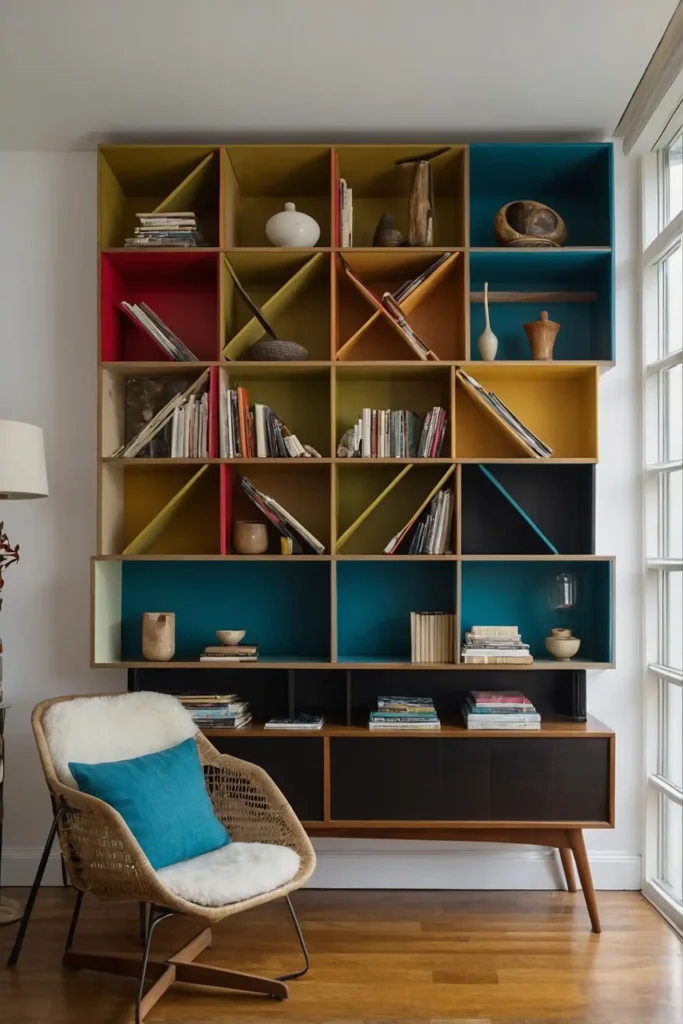
Create architectural interest with built-in shelving featuring asymmetrical compartments.
This distinctly midcentury approach combines practical storage with artistic display opportunities.
Alternate open and closed storage sections to reduce visual clutter.
Use these shelves to showcase period ceramics, small sculptures, or your collection of vinyl records.
Paint the backing of select compartments in accent colors for added depth.
This characteristic feature echoes the modular, functional approach of midcentury architecture and furniture design.
8: Indoor Plants In Architectural Planters
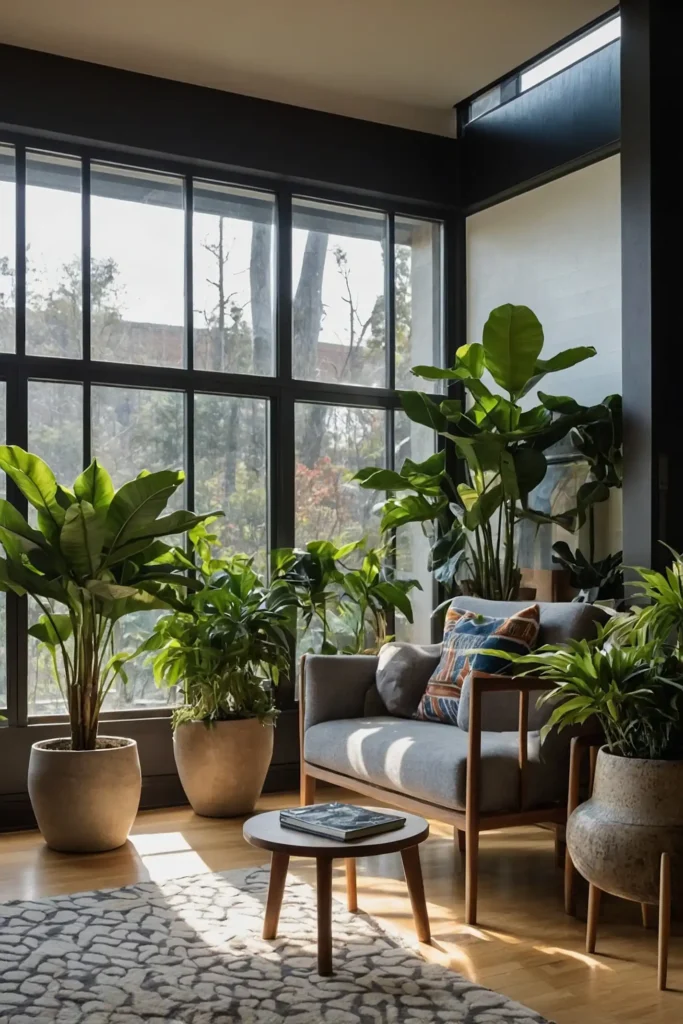
Bring the midcentury obsession with indoor-outdoor living into your space with strategic greenery.
Choose tall, architectural plants like fiddle leaf figs, rubber plants, or palm varieties.
Place them in ceramic or wooden planters with tapered legs to elevate them off the floor.
Position plants near windows to create that crucial connection to nature.
This simple addition honors the midcentury emphasis on merging interior spaces with the natural world.
The organic forms of plants also balance the clean lines of your furniture.
9: Floating Fireplace
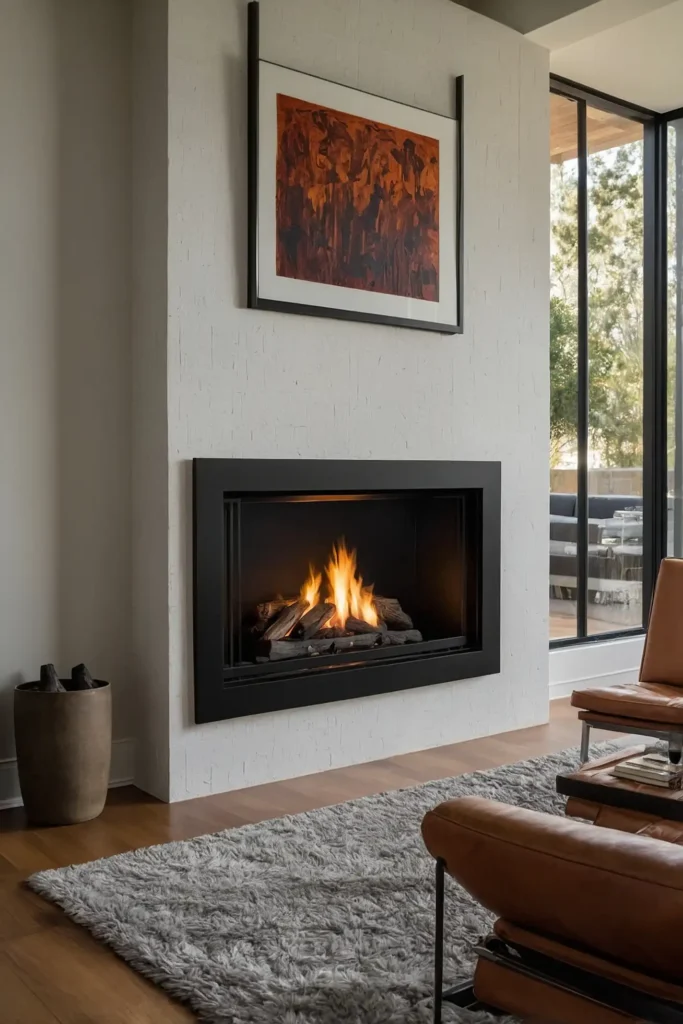
Install a suspended or wall-mounted fireplace for an unmistakably midcentury focal point.
These distinctive features were revolutionary when introduced and remain striking today.
Choose a model with a simple, conical shape in white or black enamel.
If a true floating fireplace isn’t possible, consider a sleek, minimalist fireplace insert instead.
This architectural element serves as both practical heating and sculptural centerpiece.
It embodies the midcentury principle of making functional items into artistic statements.
10: Graphic Wall Art
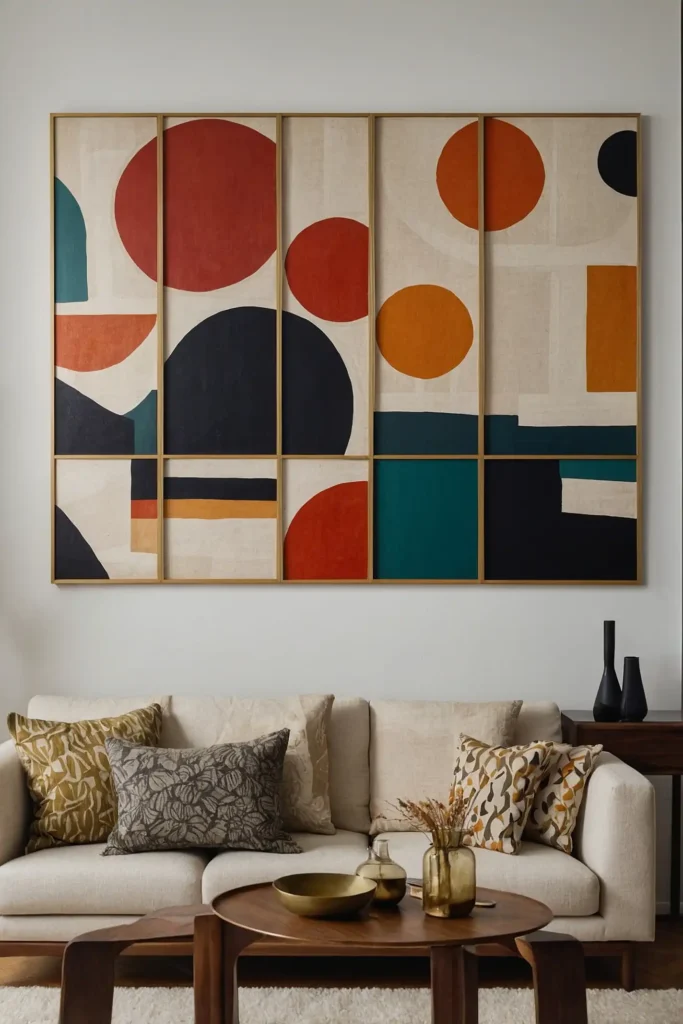
Display bold, abstract artwork that captures the experimental spirit of midcentury design.
Look for pieces featuring geometric shapes, abstract forms, or atomic-inspired patterns.
Frame your selections simply in thin wooden frames to maintain the era’s minimalist aesthetic.
Create a gallery wall of smaller pieces or make a statement with one large canvas.
The right artwork reinforces your color scheme while adding personality to your space.
Choose pieces that speak to you while reflecting the playful creativity of the period.
11: Teak Media Console
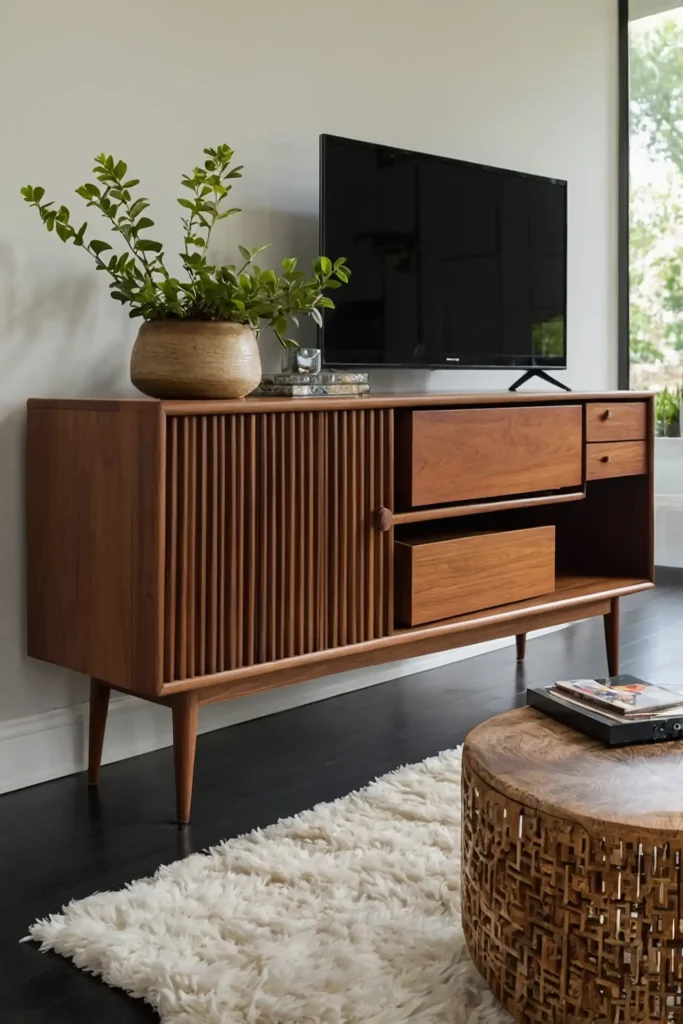
Anchor your entertainment area with a long, low teak media console.
These practical pieces offer ample storage while showcasing the beautiful wood grain central to midcentury design.
Look for models with sliding doors, tapered legs, and minimal hardware.
The horizontal orientation creates a strong visual line that enhances your room’s proportions.
Style the top with a few carefully chosen objects like a record player, sculptural lamp, or small plant. This functional piece becomes a sophisticated design statement.
12: Glass And Metal Accent Tables
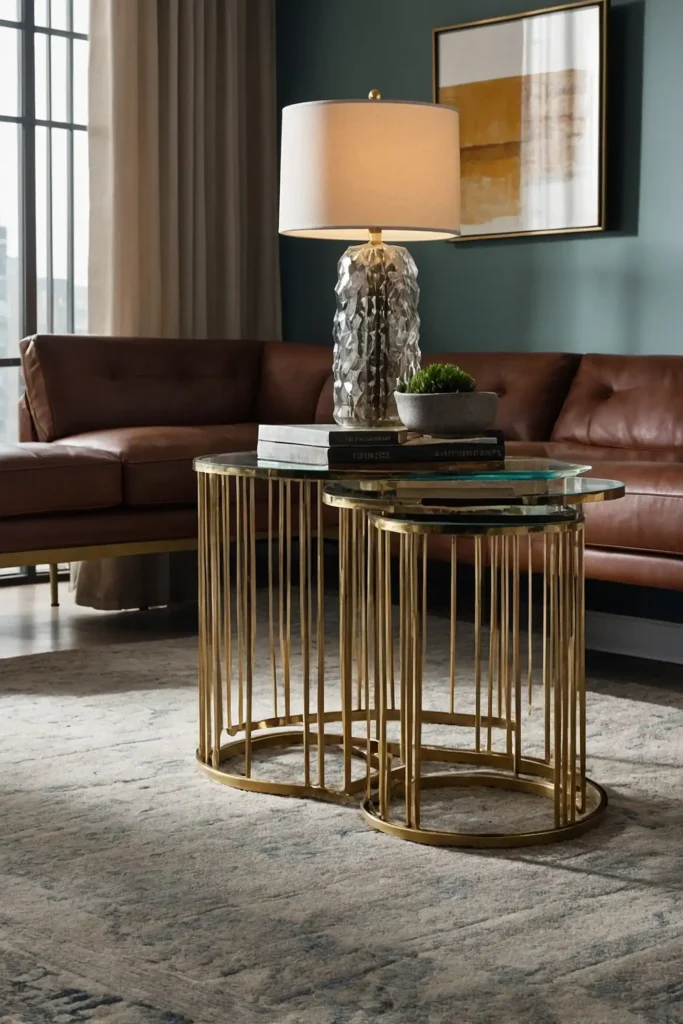
Incorporate the transparency of glass with the sleekness of metal through accent tables.
These materials were innovative and prominent during the midcentury era.
Look for tables with simple geometric shapes – rounds, triangles, or rectangles with thin metal frames. Group tables of different heights to create visual interest.
The reflective quality of these materials adds lightness and space to your room. They provide function without visual heaviness, perfect for smaller living areas.
13: Room Dividers And Screens
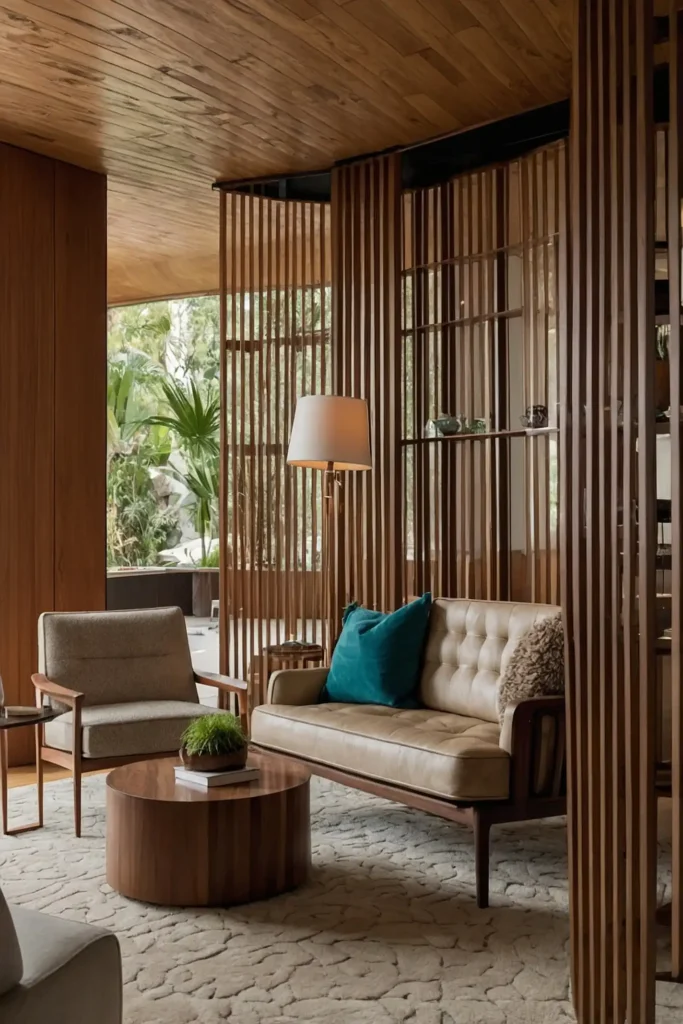
Define areas within your space using decorative room dividers, a hallmark of midcentury open floor plans.
These versatile elements add architectural interest while maintaining flow.
Choose screens featuring geometric cutouts, woven materials, or simple wooden slats.
Position them to suggest different functional zones without blocking light or views.
This approach honors the midcentury emphasis on flexible living spaces. It allows you to create distinct areas while maintaining the openness characteristic of the style.
14: Tension-Pole Floor Lamps
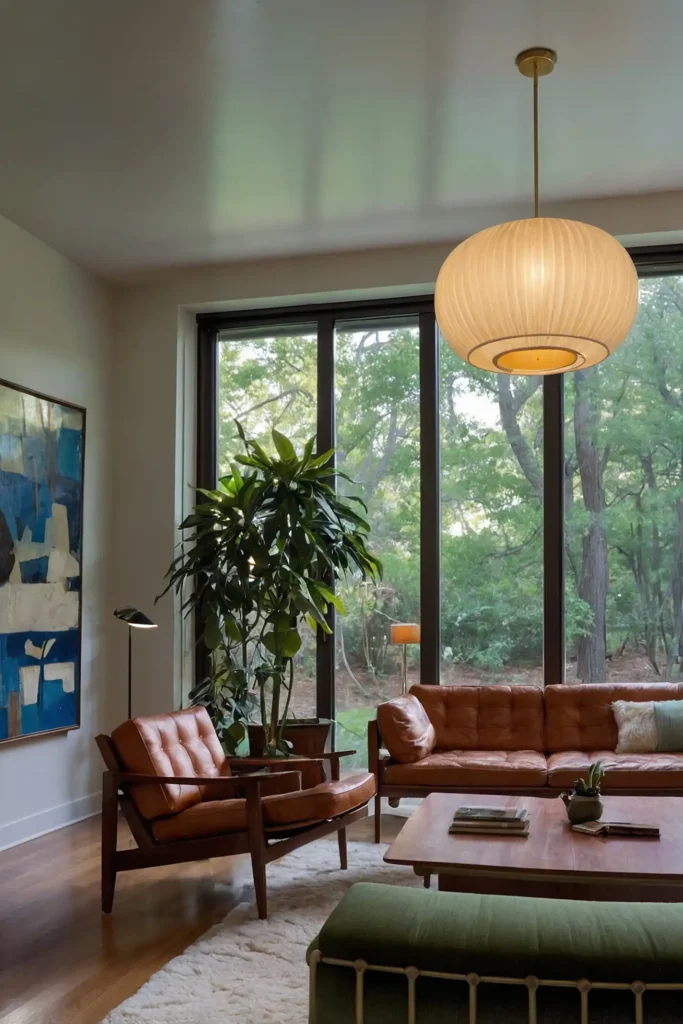
Add authentic midcentury lighting with a tension-pole lamp that extends from floor to ceiling.
These innovative fixtures provide adjustable task lighting while making a strong design statement.
Position them near seating areas where reading light is needed. Choose models with multiple adjustable heads to direct light where needed.
The vertical line created by these lamps draws the eye upward, creating a sense of height.
This functional sculpture embodies the midcentury marriage of innovation and aesthetics.
15: Color Blocking With Paint
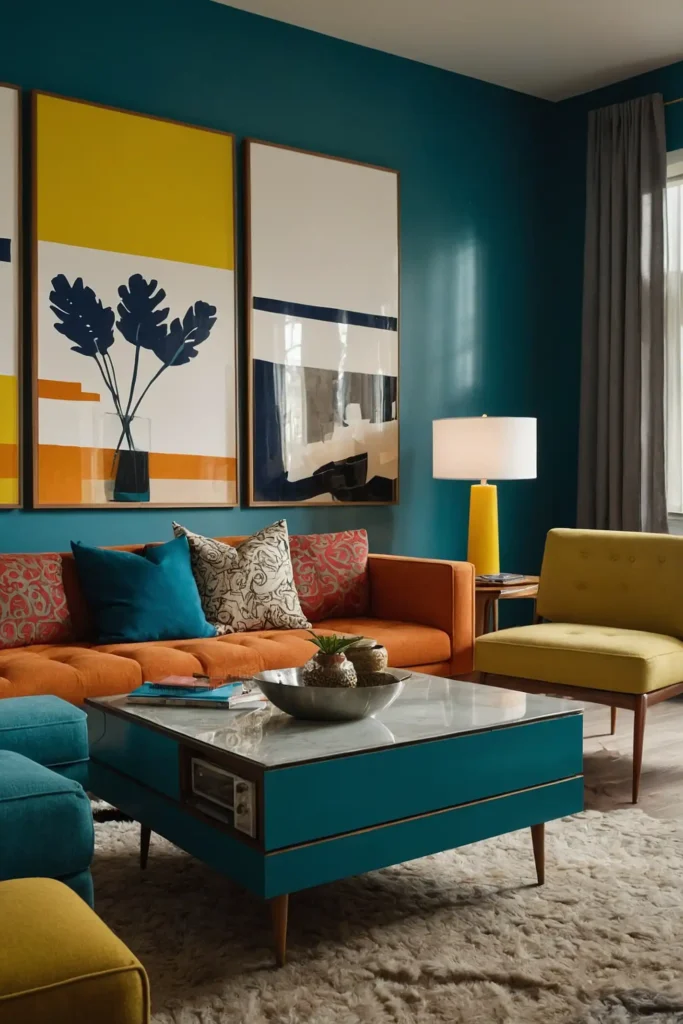
Create architectural interest with strategic color blocking on your walls.
Use two or three colors from the midcentury palette to define different areas or highlight architectural features.
Consider painting a single wall in a bold hue like mustard yellow or teal blue.
Alternatively, create horizontal bands of color to suggest the clean lines of midcentury architecture.
This approach adds visual dimension without requiring construction. It’s an affordable way to capture the era’s playful approach to color and space definition.
16: Conversation Pit Inspiration
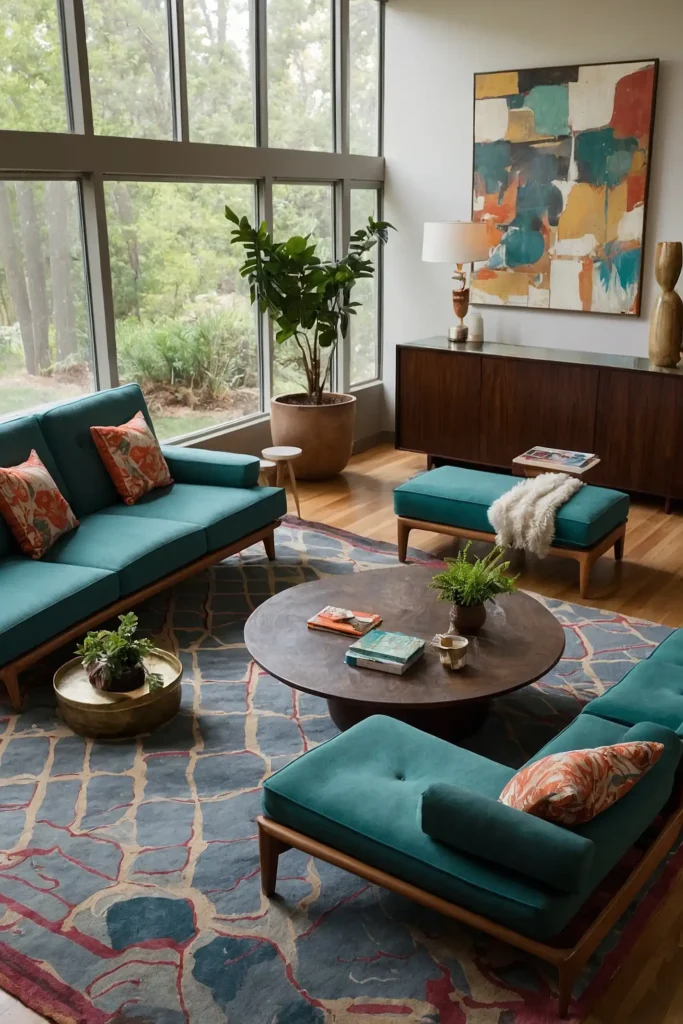
Channel the midcentury conversation pit concept by arranging seating in a U-shape configuration.
This arrangement prioritizes human interaction over television viewing.
Center this grouping around a coffee table that’s accessible to all seats. Include side tables at the ends for drinks and reading materials.
While you don’t need an actual sunken floor, this arrangement captures the social focus of midcentury living rooms.
It creates an intimate gathering space perfect for entertaining.
17: Scandinavian-Midcentury Fusion
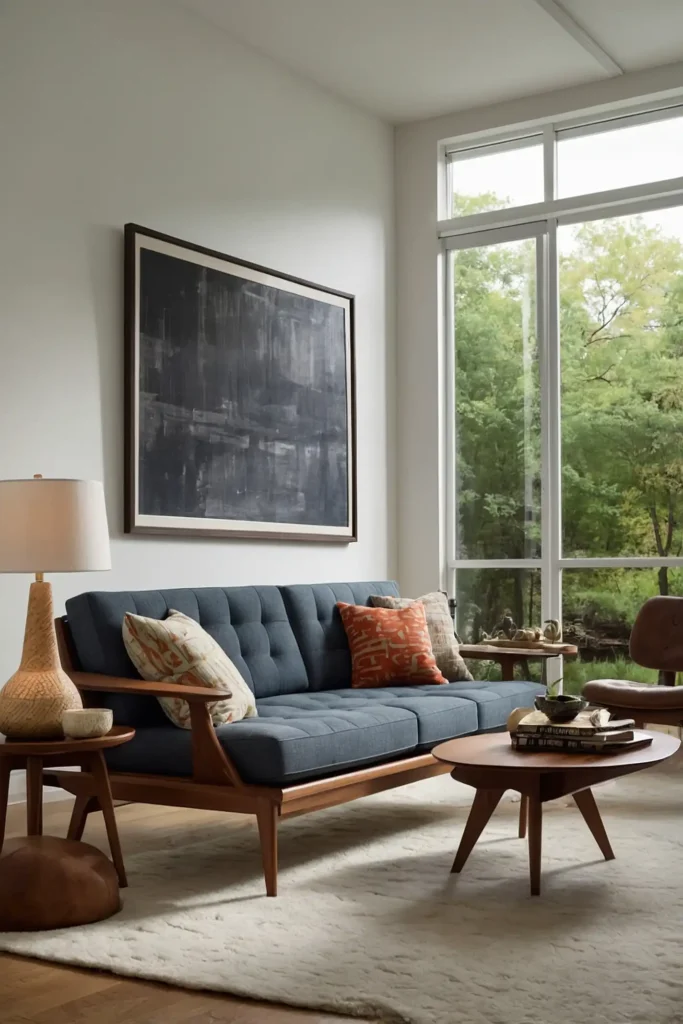
Blend midcentury elements with Scandinavian simplicity for a lighter, brighter interpretation of the style.
This popular hybrid feels fresh and livable for contemporary homes.
Incorporate lighter woods like oak or birch alongside midcentury silhouettes. Add textured textiles in neutral tones for warmth and comfort.
This approach maintains the clean lines and functional focus of midcentury design while creating a more serene atmosphere.
It’s perfect for those who find pure midcentury too dark or intense.
18: Grasscloth Wall Coverings
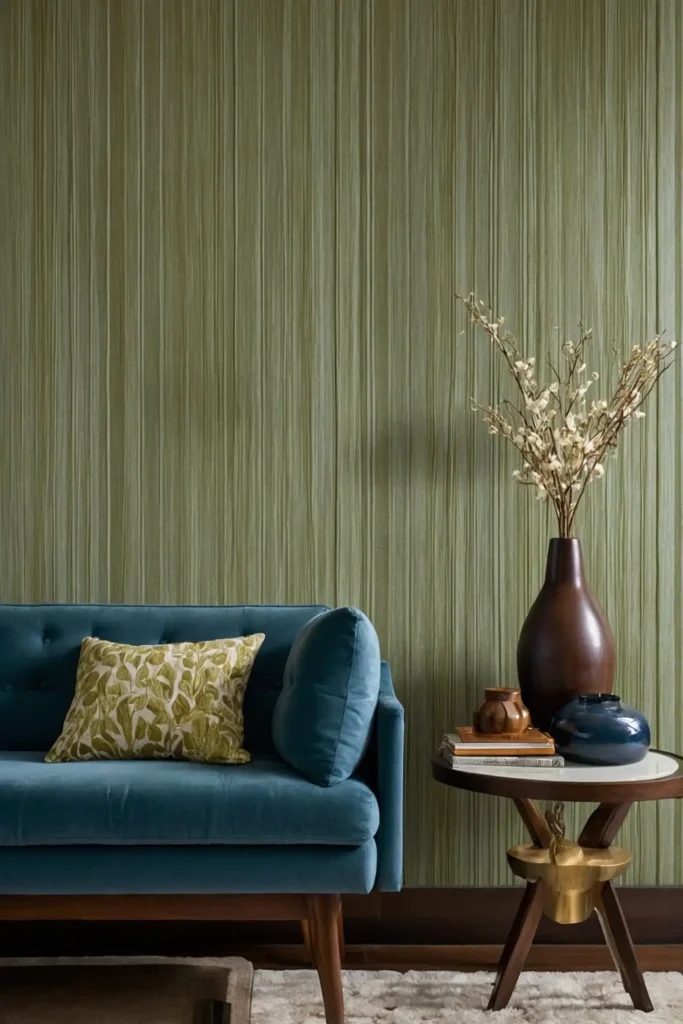
Apply textured grasscloth wallpaper to create organic warmth characteristic of sophisticated midcentury interiors.
This natural material adds subtle pattern without overwhelming your space.
Choose neutral tones like warm beige, soft green, or gentle blue.
Apply to a single feature wall or throughout the room for enveloping texture.
This authentic finish adds depth and interest to your walls while honoring the midcentury appreciation for natural materials.
It creates a perfect backdrop for your furniture and art.
19: Floating Hearth With Integrated Seating
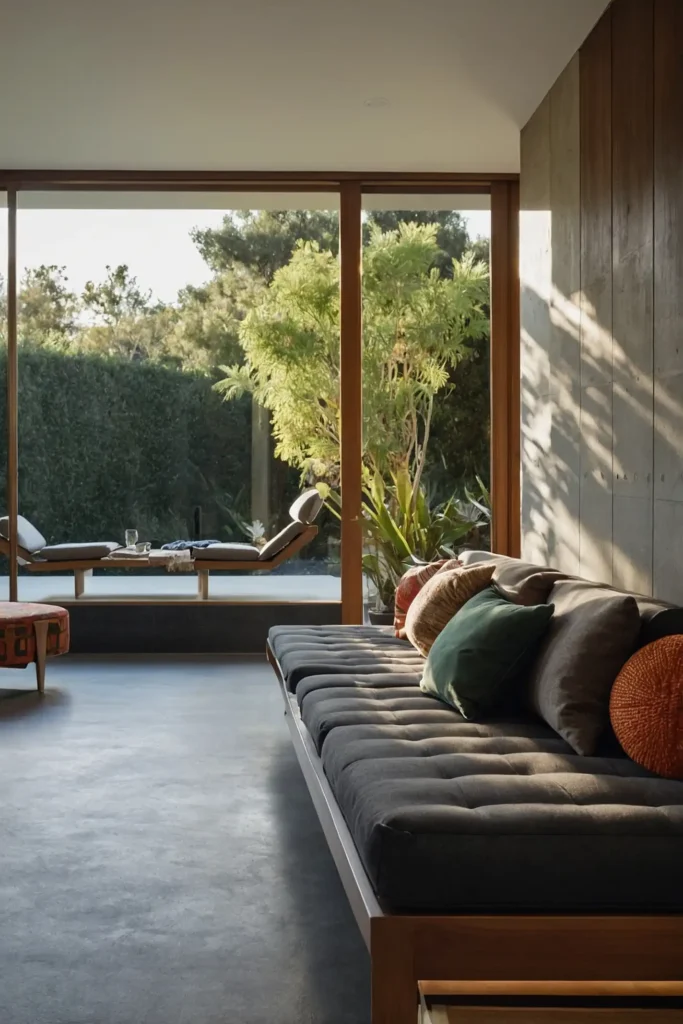
Create a central gathering spot with a floating hearth that extends to form integrated seating. This architectural feature was popular in custom midcentury homes.
Use natural stone or terrazzo for the hearth surface, extending it horizontally to form a bench. Add simple cushions in period-appropriate fabrics for comfort.
This multifunctional element serves as both practical heat source and built-in furniture. It embodies the midcentury principle of integrating architecture with furnishings.
20: Statement Ceiling Beams
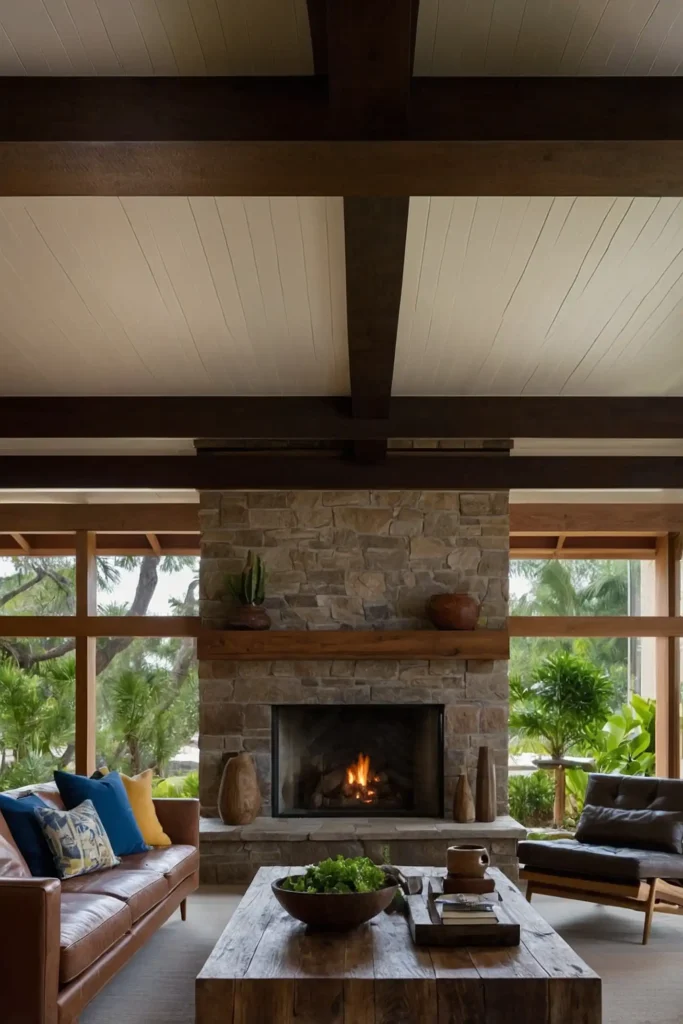
Expose or add ceiling beams to reference the structural expressionism of midcentury architecture.
This element adds visual interest overhead while creating architectural authenticity.
Paint beams in dark wood tones to contrast with lighter ceilings, or maintain natural wood for warmth. Arrange lighting to highlight this structural feature.
This detail draws the eye upward, creating a sense of volume in your living space.
It honors the midcentury principle of honest expression of structural elements.
21: Terrazzo Accents
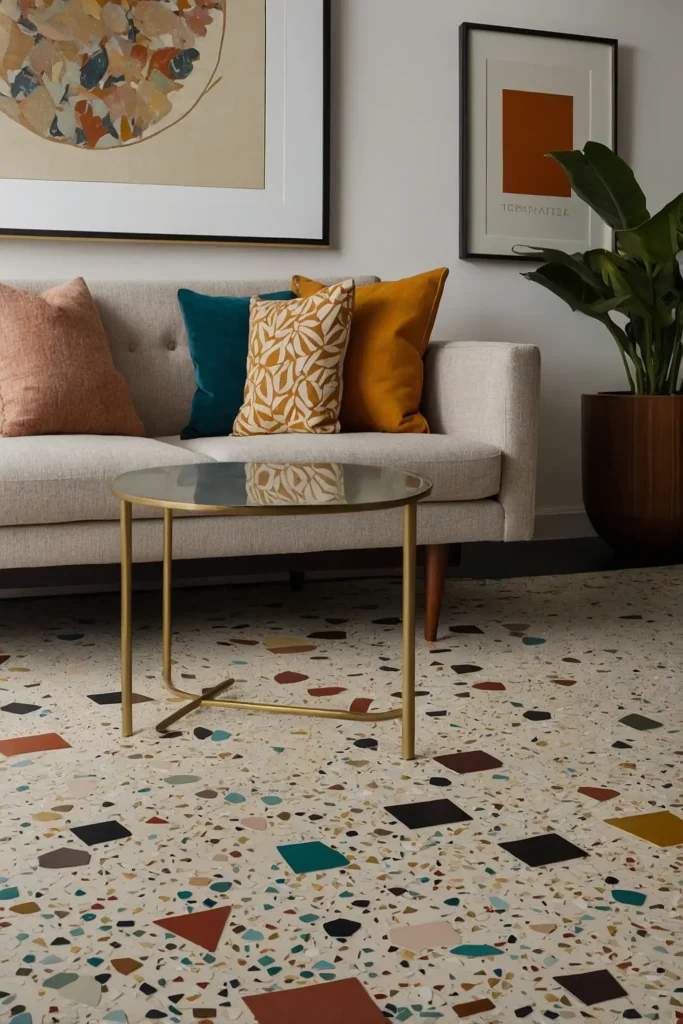
Incorporate terrazzo, the speckled composite material beloved in midcentury commercial spaces, through decorative accents.
This distinctive material adds authentic period character.
Look for terrazzo coffee tables, lamp bases, or decorative objects.
Alternatively, consider a terrazzo area rug that creates the look without the commitment of actual terrazzo flooring.
The playful, confetti-like pattern adds visual texture while connecting to the material innovation of the era.
These elements introduce the midcentury appreciation for new composites.
22: Floating Cabinetry And Shelves
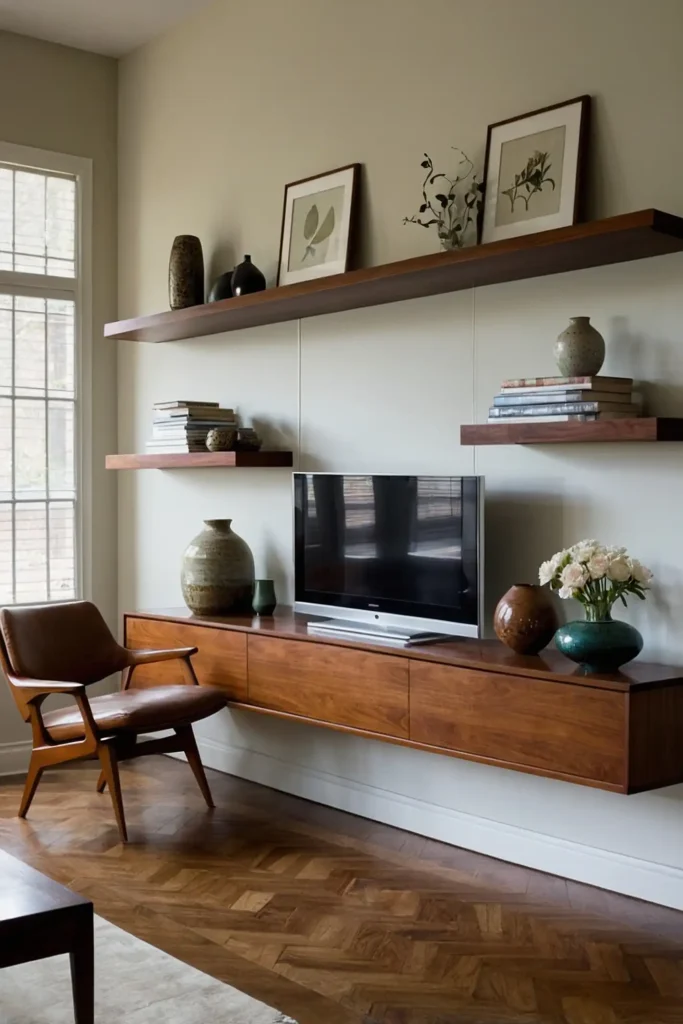
Install wall-mounted cabinets and shelves that appear to float against the wall.
This characteristic midcentury approach creates lightness and visual space beneath the furnishings.
Choose simple wooden units with minimal hardware or decorative details. Position them at a consistent height to create a horizontal line around the room.
This approach maximizes floor space while providing practical storage. It captures the midcentury emphasis on creating an airy, uncluttered environment.
23: Patterned Accent Pillows
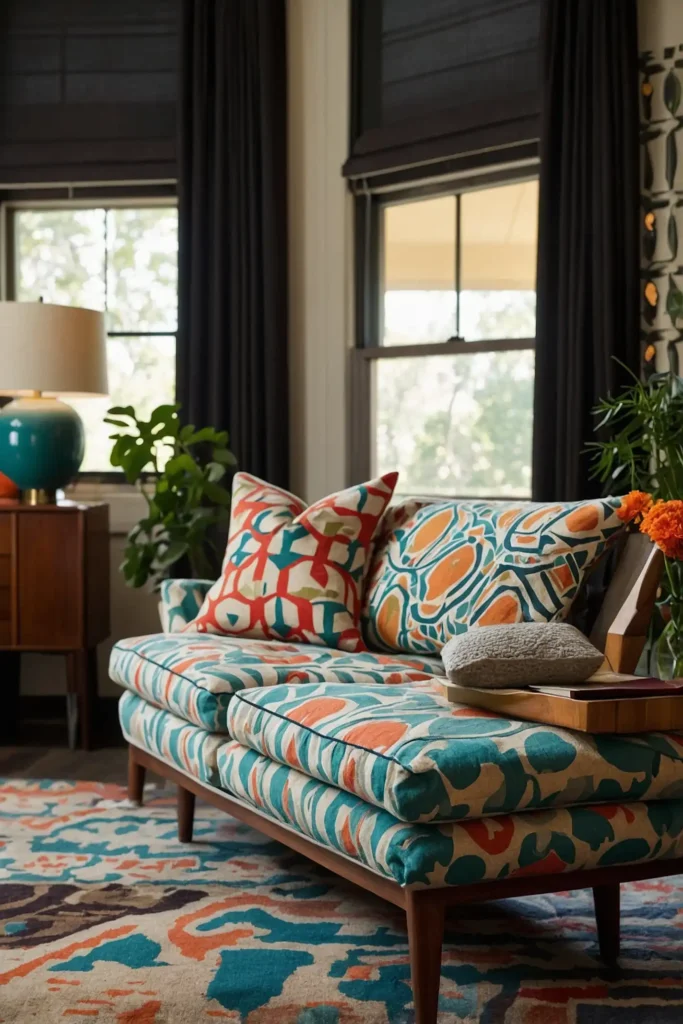
Layer your solid-colored midcentury furniture with graphic accent pillows featuring characteristic patterns.
Look for geometric designs, abstract shapes, or atomic motifs in complementary colors.
Limit yourself to 2-3 pillow designs to prevent visual chaos. Choose fabrics with texture like wool, linen, or period-appropriate barkcloth.
These small accents add personality and pattern to your space without major commitment.
They allow you to experiment with bolder midcentury motifs in small doses.
24: Mixed Material Coffee Tables
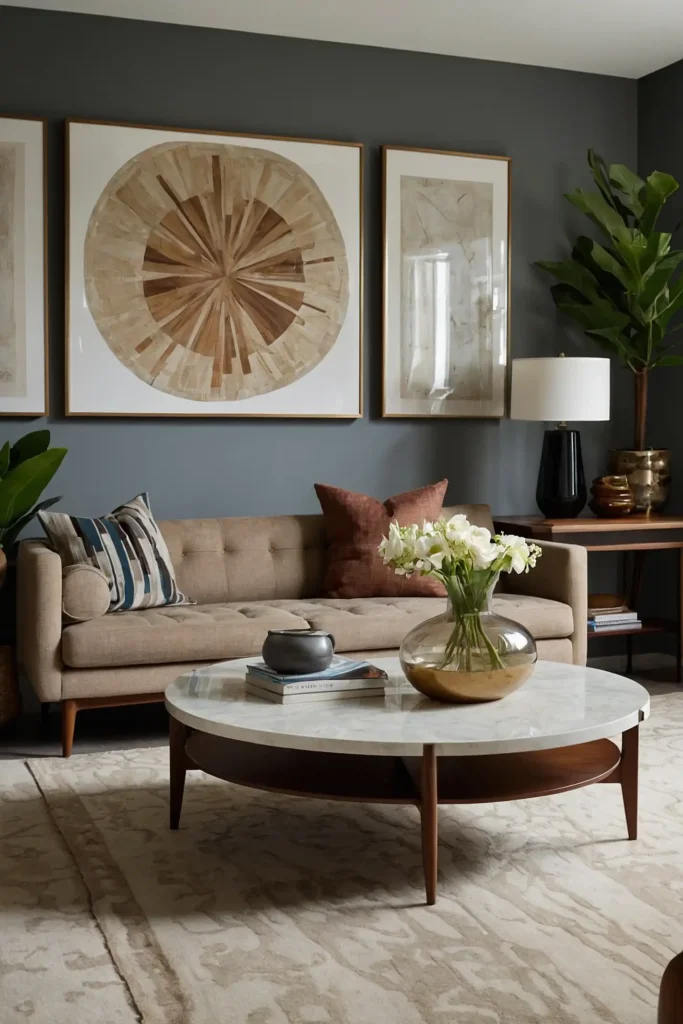
Center your seating arrangement around a coffee table that combines materials in true midcentury fashion.
Look for pieces featuring combinations of wood, glass, metal, or stone.
Choose simple geometric forms like rectangles, rounds, or organic kidney shapes.
Ensure the height works proportionally with your seating – generally lower than contemporary tables.
This central piece anchors your living area while showcasing the midcentury fascination with material contrast.
It creates a natural gathering point that’s both functional and sculptural.
25: Track Lighting Systems
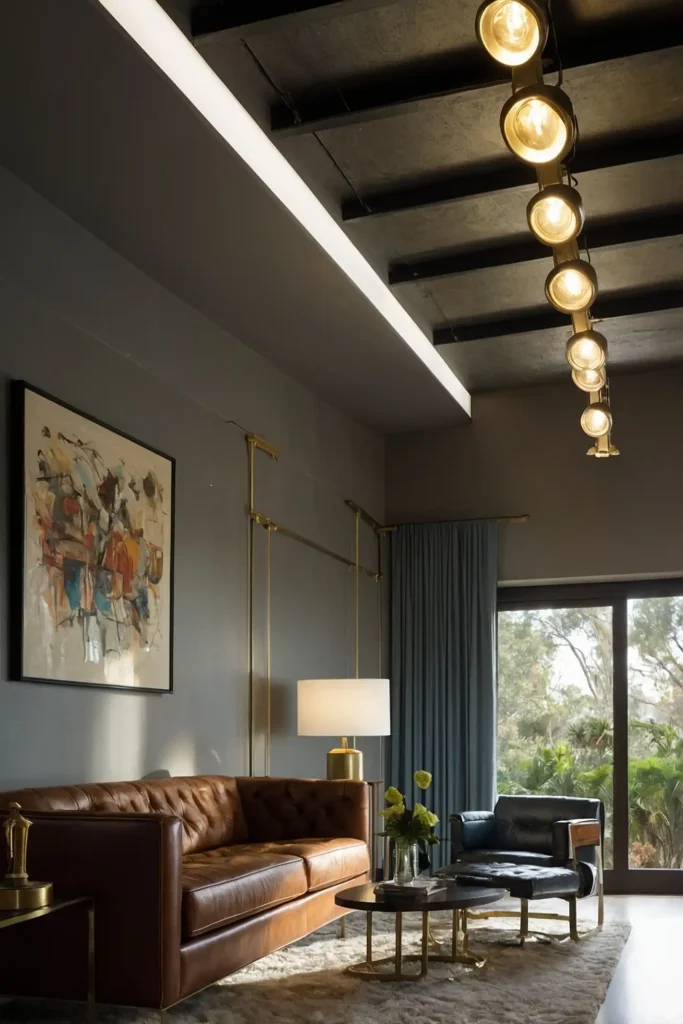
Install adjustable track lighting to provide flexible illumination with midcentury industrial flair.
These systems allow you to highlight artwork or architectural features while providing ambient light.
Choose simple track designs in brass or brushed aluminum. Position tracks to illuminate key areas while remaining visually unobtrusive.
This lighting solution offers contemporary functionality with distinctly midcentury aesthetics.
It honors the era’s emphasis on adaptable fixtures that serve specific purposes.
26: Sunburst Wood Paneling
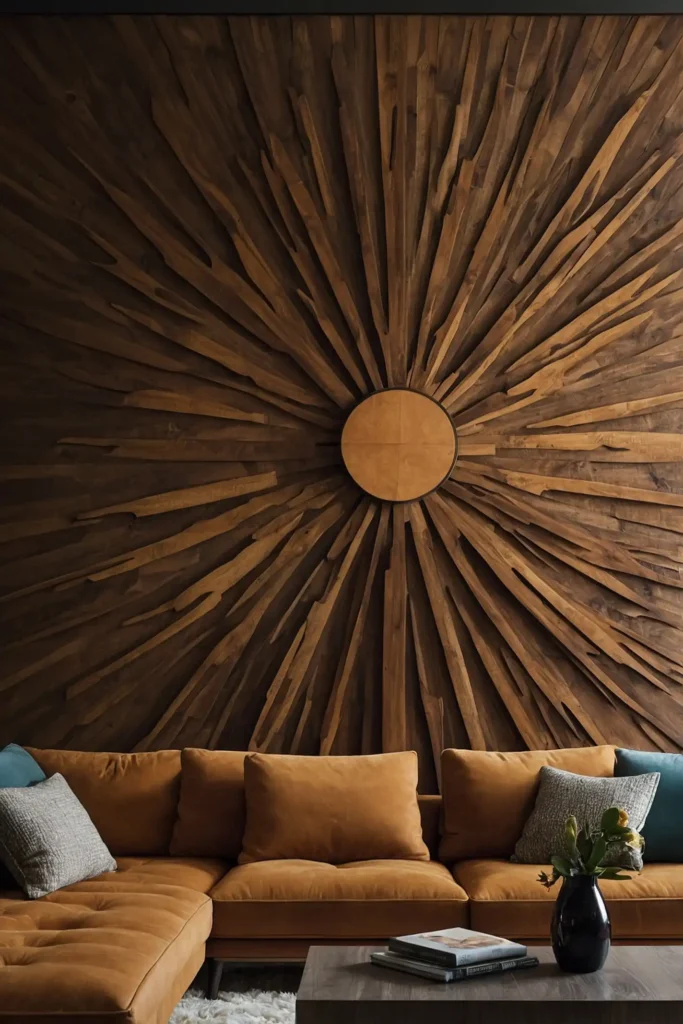
Create a focal wall with sunburst wood paneling that radiates from a central point.
This dramatic treatment channels the decorative wood applications found in high-end midcentury interiors.
Use varying wood tones to enhance the dimensional effect. Apply this treatment behind a sofa or fireplace to maximize impact.
This architectural element adds warmth and texture while creating a distinctive midcentury statement.
It transforms a simple wall into an artistic feature that anchors your design.
27: Bar Cart Styling
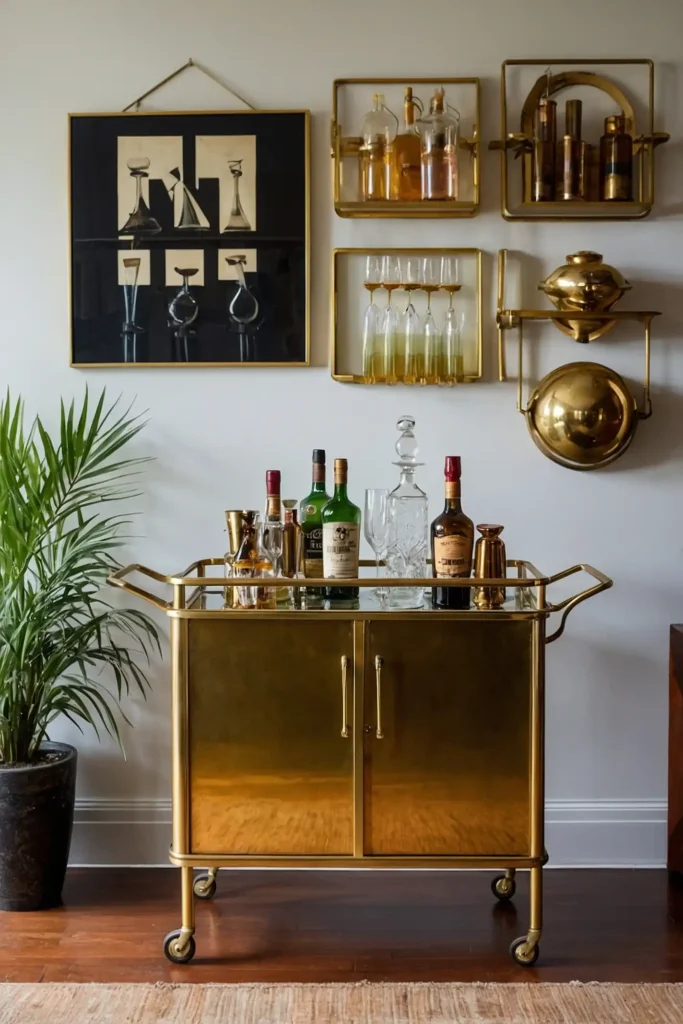
Position a brass bar cart in your living room as both functional serving piece and decorative element.
These mobile units were essential to midcentury entertaining.
Style the cart with vintage decanters, cocktail books, and a few carefully chosen bar tools.
Include plants or decorative objects to prevent a purely utilitarian appearance.
This practical piece captures the midcentury emphasis on stylish entertaining at home.
It adds a touch of glamour while serving as a conversation piece during gatherings.
Conclusion
By incorporating these midcentury modern elements into your living room, you’ll create a space that honors this iconic design era while remaining fresh and livable for today’s lifestyle.
Start with one or two ideas and watch your space transform!



